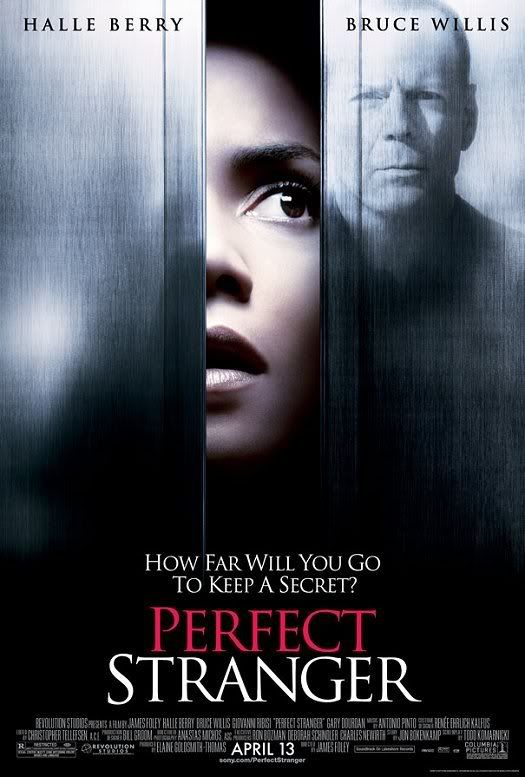In the final edit, we used a drone to give the piece atmosphere and then added in the piano piece to give it an inoccent feel, making the audience feel sorry for ther girl. In the second section, of the film, we left it silent with just the diajetic, cafeteria sounds.
Thursday, 22 January 2009
Working with Soundtrack Pro
In the final edit, we used a drone to give the piece atmosphere and then added in the piano piece to give it an inoccent feel, making the audience feel sorry for ther girl. In the second section, of the film, we left it silent with just the diajetic, cafeteria sounds.
Tuesday, 4 November 2008
Media Terminology
- Thriller genres
- Thriller directors
- Thriller films
- Typical thriller locations
- Thriller protagonists and antagonists
- How to use the filming equipment
- How to use final cut pro
However, in this post, i have decided to re-cap on the terminolgy. We should all know have a fairly wide vocabulary of media terms:
Genre: A category of media texts characterized by a particular style, form or content.
Industry: The agencies and institutions involved with the production of media texts. The term is also used in a more narrow sense to describe the commercial production of media texts for the purpose of making a profit.
Film Noir: French for "black film" or "dark film". A term used describe a genre of film popular in America between 1940 and 1960.
Fade: A transition to or from "nothing". In audio, to or from silence. In video, to or from a colour such as black.
Focus: The process of adjusting the lens in order to obtain a sharp, clear picture
Pan: Horizontal camera movement.
180 degree rule: The 180° rule is a basic film editing guideline that states that two characters (or other elements) in the same scene should always have the same left/right relationship to each other. If the camera passes over the imaginary axis connecting the two subjects, it is called crossing the line. The new shot, from the opposite side, is known as a reverse angle.
Mise en scene: The arrangement of visual compositional elements and movements within a given space. In movies, it is defined by the frame that enclosed the images.
Editing
However, I found this video, which could help:
Preliminary Evaluation
Tuesday, 28 October 2008
Thriller Directors

Hitchcock was an iconic and highly influential director and producer. He introduced many techniques into the suspense and thriller genres. His most reknowned thriller was Physco (1960). Here is the film's pivotal scene, and one of the most famous scenes in cinema history; the murder of Janet Leigh's character in the shower.
The following information was taken from the blurb of this film clip::
" It was shot from December 17 to December 23, 1959 and between 71 and 78 angles (the exact number is unknown). The scene "runs 3 minutes and includes 50 cuts." Most of the shots are extreme close-ups except for medium shots in the shower directly before and directly after the murder. The combination of the close shots with the short duration between cuts makes the sequence feel longer, more subjective, more uncontrolled, and more violent than the images themselves were they presented alone or in a wider angle.In order to capture the straight-on shot of the shower head, the camera had to be equipped with a long lens. The inner holes on the spout were blocked and the camera placed farther back, so that the water appears to be hitting the lens but actually went around and past it.The soundtrack of screeching violins, violas, and cellos was an original all-strings piece by composer Bernard Herrmann entitled "The Murder." Hitchcock originally wanted the sequence (and all motel scenes) to play without music, but Herrmann begged him to try it with the cue he had composed. Afterwards, Hitchcock agreed that it vastly intensified the scene and he nearly doubled Herrmann's salary. The blood in the scene is in fact chocolate syrup, which shows up better and has more realistic density than stage blood on black-and-white film. The sound of the knife entering flesh was created by plunging a knife into a casaba melon."
Saturday, 18 October 2008
Thriller Protagonists
Female actresses who have taken roles in Thriller films are:
Jodie Foster-Flightplan

Katherine Heigl-Zyzzyx Road

Halle Berry- Perfect Stranger

I found it hard to find even these. So i have therefore come to the conclusion that it is most common for males to play the protagonist in thriller films.
Protagonist-The main character in a play around whom most of the action is based.(http://www.dramatic.com.au/glossary/glossaryp_z.htm)
Antagonist-Any force in the story in conflict with the protagonist. It may be a person, the physical or social environment, a destructive element in the protagonist’s own nature.(http://faculty.weber.edu/dkrantz/en2500/Shortstoryvocab.htm)




